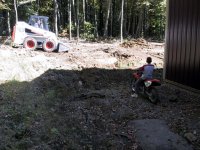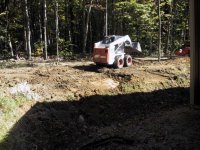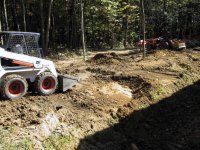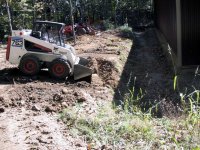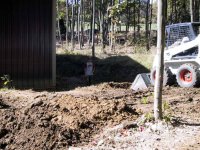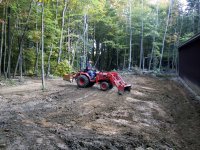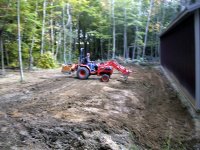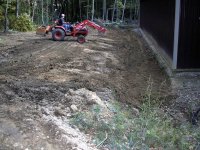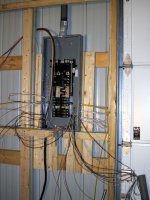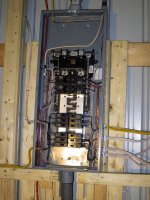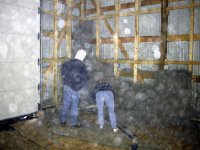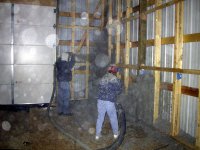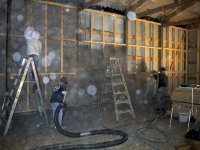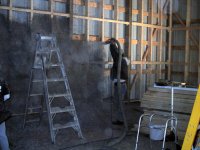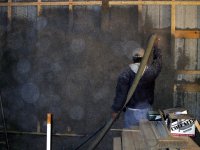This past Monday the insulation crew from Dave Ritsko Insulation arrived and in fairly short order were spraying the insulation in the walls. It's Nu-Wool cellulose fiber insulation that is ground up/fluffed and sprayed in "wet" (damp actually - the moisture level is about 20%)
Their website is here:
Nu-Wool Insulation: Manufacturer of WALLSEAL, a spray-in-place cellulose insulation
The cellulose is shot down a big hose (3") under pressure and at the end there are a pair of smaller nozzles on either side that add water to the cellulose as it's coming out the end, making it slightly wet so that it sticks together once it's in place. The insulation is sprayed out past the face of the studs and then trimmed off flush with a a device that is kinda like long paint roller powered by a cordless drill. One of the crew sucks up the trimmings with a vacuum hose that feeds back into the blower in the truck so that the trimmings are recycled back into the mix so there is very little waste. If I had a concrete floor rather than just gravel the amount of waste would have been practically zero.
The result is a sprayed-in-place insulation that completely fills and totally conforms to the cavity, is very dense, and pretty much totally seals the wall. They (Nu-Wool) claim that it stops air inflitration to such a degree that a vapor barrier isn't required .... other than just some drywall or wall board.
The wall cavity is 7" deep and it should provide an effective R-value of about 27.
The other advantage is that I didn't have to do it. I was looking at putting standard fiberglass batts - I would have had to cut it all to fit and put it up, there still would have been gaps and voids, I would have been breathing 'glass, etc. These guys were in and out in about 5 hours (would have went a little faster but they had to work around the stuff I had piled in the barn.) Since the cost of doing this (installed) was only about 50% more than the price of materials alone for fiberglass, not counting my labor and it resulted in a better end product with a far greater r-value, it seemed like a no-brainer.
I noticed immediately after they had finished that it completely quieted the barn. I know that most of the heat loss in a building is through the ceiling but it has already made a huge difference - I guess the cold steel of the walls was really sucking out the heat .... I just didn't realize how much. I can now fire up the torpedo heater and within a couple of minutes it's already feeling warmer. After 15 - 30 minutes I've seen a temperature rise 6 to 8 degrees - something that didn't happen before I had the insulation up.
Once I get a celing up I'll probably blow in cellulose myself into the attic.

